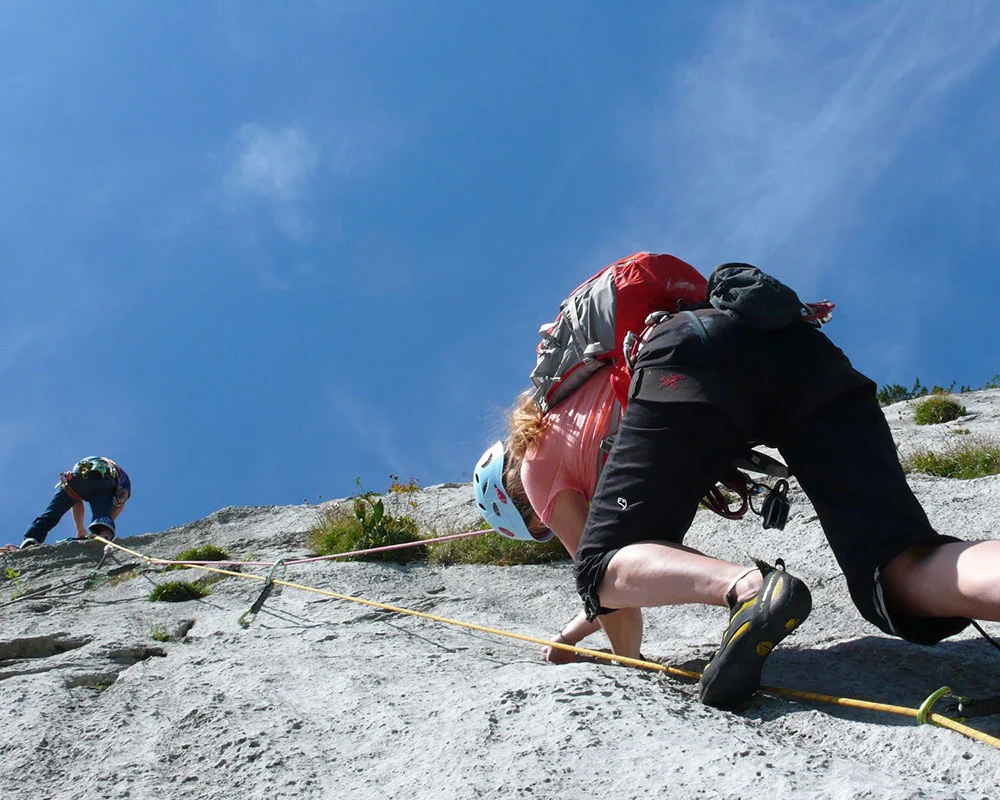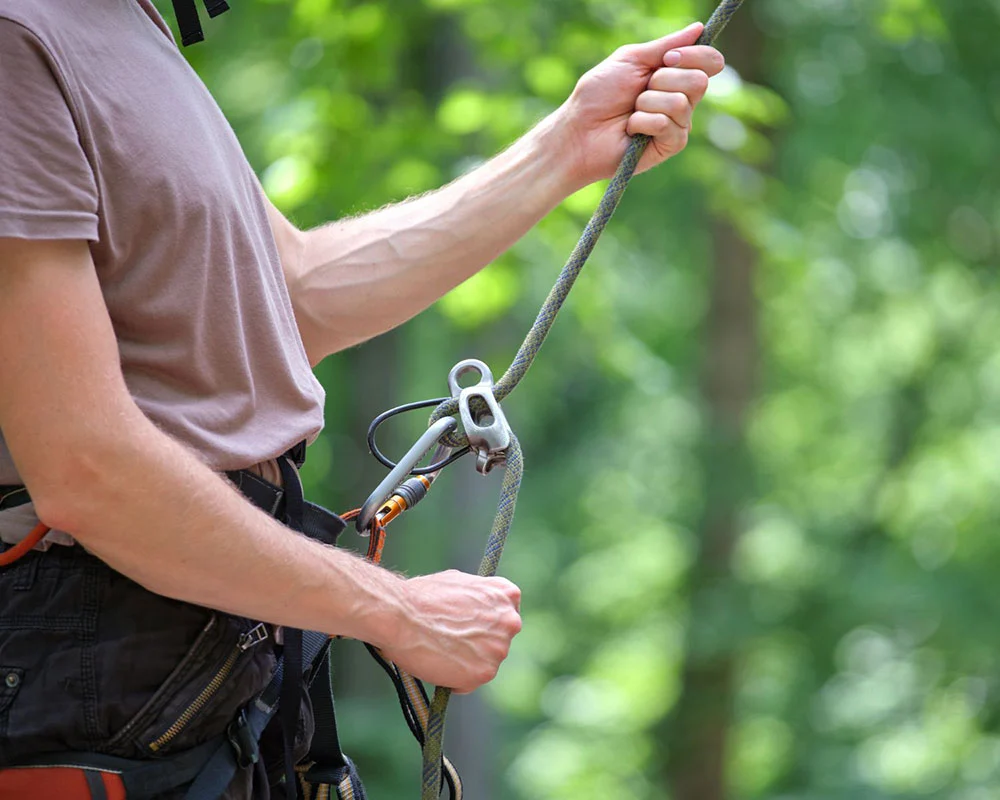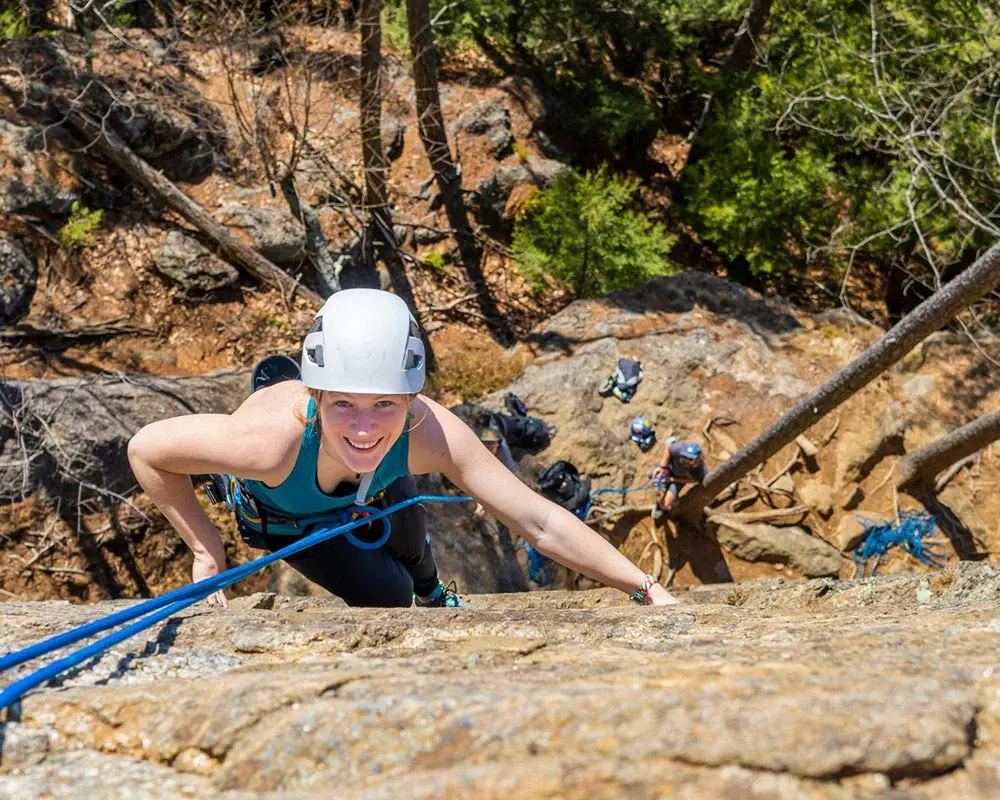The question “Why is bouldering so hard?” contributes to the complexity of bouldering, an activity that necessitates both skill and strength in combination. It engages you mentally and physically.
This article breaks down all of the factors that make bouldering such a difficult yet fun sport.
Ready? Let’s get started!
Key Takeaways
- Bouldering requires a balance between body weight and grip strength, making raw physical strength key to overcoming this challenging activity.
- Bouldering demands precise and powerful movements that rely on body awareness, coordination, and strong grip strength.
- Technical knowledge and problem-solving are essential in bouldering as climbers must analyze each obstacle before making a move.
- Starting over after a fall is an integral part of bouldering and an opportunity to learn from mistakes and improve climbing skills.
Factors That Make Bouldering Challenging
Bouldering is challenging due to the significant strength required, precise and powerful movements demanded, technical knowledge and problem-solving skills relied upon, and the need to start over after a fall.
Let’s cover each one of these.
Requires Significant Strength
Bouldering is a sport that demands more than just your average muscle power. Unlike regular climbing, you have no ropes or harnesses when you boulder. You wrestle with gravity without any protective gear and rely on grip strength to keep yourself up on the wall.
But it’s not about being the strongest climber in the gym; it’s about using what you’ve got most effectively – positioning your body right, leveraging angles smartly, and unleashing explosive bouts of strength when needed.
Each move you make while gripping those boulders burns through energy faster than standard rock climbing – making raw physical strength key to overcoming this challenging yet rewarding activity.
Demands Precise and Powerful Movements
Bouldering requires you to engage in precise and powerful movements. It’s not just about strength. It’s about moving with accuracy and control. Every move counts in bouldering. Shifting your weight too much on one foot or failing to reach the right handhold can result in a slip off the wall or failing to “send” a route.
You’re also working against gravity, which demands significant muscular strength. It’s not just your arms and legs doing all the work here. Your fingers need to have robust grip strength.
In fact, each movement relies heavily on body awareness and coordination, which is why decision-making plays an important role in indoor bouldering. Shorter decision times often result in fewer mistakes.
Bouldering is a difficult activity that goes beyond mere brute strength. It is known for combining physical prowess with mental resilience, making it a true test of both mind and body.
Relies on Technical Knowledge and Problem-Solving Skills
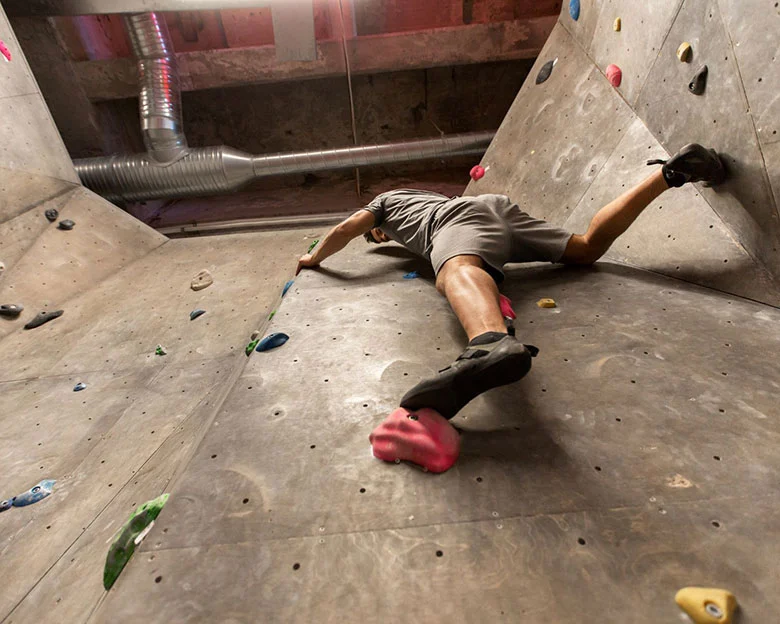
Bouldering pushes you to master complex climbing techniques and sharpens your problem-solving abilities. It’s not just about raw strength or the ability to cling to a wall, but understanding how to tackle each particular route.
This sport calls for meticulous analysis of each boulder obstacle before making a move. The challenge lies in finding the best way to climb using as little energy as possible, like solving a physical puzzle.
Unlike regular rock climbing where routes are marked clearly, bouldering often requires climbers to think on their feet during their climb.
Imagine being presented with an outdoor bouldering problem where you must decide which tiny hold will support your weight or which foot positioning would open up the next sequence of moves.
As a result, every climb turns into an exhilarating mental game demanding creative solutions and strategic planning for success.
Requires Starting Over After a Fall
Falling is an inevitable part of bouldering, and it can be frustrating to have to start over after a fall.
However, this is what makes bouldering such a rewarding sport. When you take a fall, it gives you the opportunity to reassess your approach and try different techniques to overcome the problem.
It’s a chance to learn from your mistakes and improve your climbing skills. It may seem discouraging at first, but every fall helps improve your skills and confidence.
So keep pushing yourself and embrace the process of starting over as an integral part of becoming a better climber.
Bouldering vs. Rock Climbing: Is Bouldering Harder?
Bouldering and rock climbing are two distinct yet closely related disciplines in the climbing world. While both share the common goal of reaching the top, key differences set them apart and add a unique level of difficulty to bouldering.
| Bouldering | Rock Climbing |
| Bouldering problems demand detailed solutions for successful ascents. | Rock climbing routes allow for more flexibility in achieving a successful climb. |
| Bouldering is often compared to a challenging sprint, with shorter, intense routes. | Conversely, rock climbing is more like an endurance race, with long, sustained routes. |
| Bouldering requires significant strength and technical footwork, especially finger strength. | In contrast, rock climbing requires a blend of strength and endurance, focusing not just on the fingers, but the whole body. |
| In bouldering, routes are typically shorter and tougher, leading to a physically demanding activity. | Rock climbing routes are often longer and less intense in terms of physical strength. |
| Bouldering is a solo activity that doesn’t require a harness or rope. | Rock climbing usually requires a partner, along with the use of a harness and rope for safety. |
In conclusion, while both bouldering and rock climbing present their own unique challenges, bouldering proves to be a tougher undertaking due to its rigorous physical demand, technical requirements, and the need for problem-solving under pressure.
Overcoming the Challenges of Bouldering
To overcome the challenges of bouldering, you can focus on building strength and endurance through regular training sessions at the gym or practicing on outdoor boulders.
Building Strength and Endurance
Building strength and endurance is essential for overcoming the challenges of bouldering. Bouldering requires a significant amount of physical strength and stamina. Here are some ways you can build your strength and endurance to improve your bouldering performance:
- Incorporate weightlifting into your training routine: Lifting weights can help you build muscle and increase your overall strength. Focus on exercises that target your arms and legs, as these are the main muscle groups used in bouldering.
- Engage in cardiovascular exercises: Running, cycling, or swimming can help improve your cardiovascular fitness, allowing you to sustain longer climbing sessions without getting tired easily.
- Practice dynamic movements: Bouldering often involves explosive and powerful movements. Incorporate exercises such as jump squats, box jumps, and plyometric push-ups to improve your ability to generate power quickly.
- Train grip strength: Grip strength is crucial in bouldering, as it allows you to hold onto small holds and maintain control while making moves. Utilize grip strengthening tools like hangboards, fingerboards, or even simple forearm exercises like wrist curls with dumbbells.
- Increase flexibility: Flexibility plays a role in improving movement efficiency and reducing the risk of injury during climbs. Incorporate stretching exercises into your routine to enhance the range of motion in your joints.
- Include core workouts: A strong core provides stability and balance during climbs. Incorporate exercises like planks, Russian twists, or leg raises to strengthen your core muscles.
Practicing Technique and Skill Development
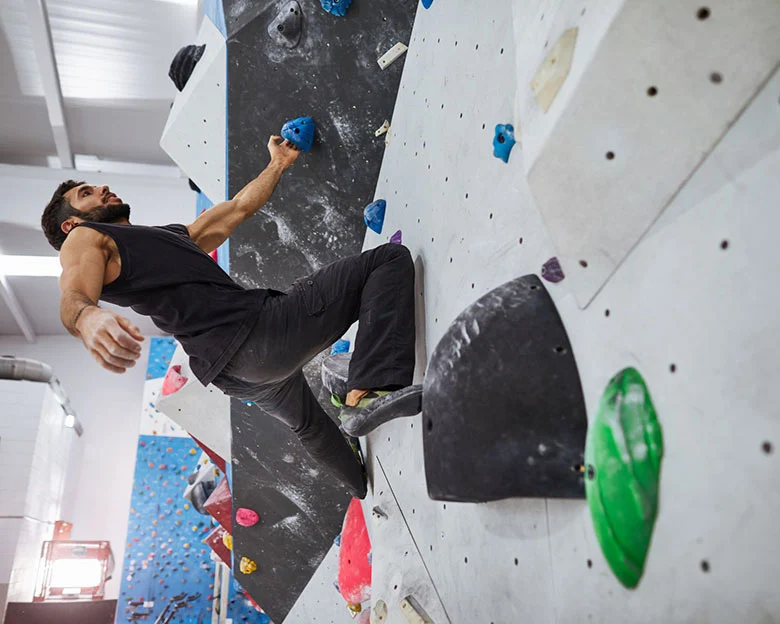
Improving your technique and developing your skills is crucial for overcoming the challenges of bouldering. Here are some effective ways to practice and improve your bouldering technique:
- Focus on footwork: Proper foot placement is essential in bouldering. Work on improving your footwork by practicing precision and accuracy when placing your feet on holds. Pay attention to how you distribute your weight on each foot to maintain balance and control.
- Work on body positioning: Learning how to position your body correctly while climbing can make a significant difference. Practice keeping your hips close to the wall, using core strength to stabilize yourself, and utilizing different body positions for various moves.
- Train finger strength: Bouldering often requires maintaining a strong grip on small holds. To develop finger strength, incorporate exercises like hangboarding, fingerboarding, or campus board training into your routine. Gradually increase the intensity and duration of these exercises over time.
- Master dynamic movements: Dynamic moves involve using momentum to propel yourself quickly from one hold to another. Practicing dynamic movements can help you overcome challenging reaches and build power in your upper body and core muscles.
- Study climbing techniques: You can learn different climbing techniques experienced climbers use by watching videos or attending climbing workshops. Techniques such as heel hooks, toe hooks, flagging, smearing, and mantle techniques can help you navigate difficult sections of a route more efficiently.
- Practice specific drills: Incorporate targeted drills into your training sessions that focus on specific climbing movements or weaknesses you want to improve upon. For example, you can work on deadpointing (jumping dynamically from one hold to another), lock-offs (holding static positions with one arm), or hand-foot matching (matching a handhold with a foothold).
- Climbing-specific workouts: Engage in regular strength training exercises that target key muscle groups used in bouldering like the arms, shoulders, back, and core. Building overall strength will enhance your climbing performance and help prevent injuries.
Developing Problem-Solving Strategies
Developing problem-solving strategies is a crucial skill every rock climber must master. Here are some key strategies to help you overcome the challenges of bouldering:
- Study the Problem: Before attempting a boulder problem, take the time to study and analyze it. Look closely at the holds, angles, and potential sequences of moves. Understanding the problem thoroughly will give you an advantage when it comes to finding the best solutions.
- Break it Down: Bouldering problems can often seem overwhelming at first glance. Break down the problem into smaller sections or individual moves. Focus on solving one move at a time, gradually building your way up through the problem until you reach a solution.
- Visualize Success: Visualization is a powerful tool in rock climbing. Imagine yourself successfully executing each move of the problem before attempting them physically. This can boost your confidence and help you make precise and controlled movements.
- Experiment with Different Beta: Beta refers to different sequences or approaches to solving a bouldering problem. Don’t be afraid to experiment with different beta options until you find what works best for your body type, strength, and style of climbing.
- Learn from Others: Watch other climbers tackle similar problems and take note of their techniques and strategies. Discuss with fellow climbers how they approach specific problems you find challenging. Learning from others’ experiences can provide valuable insights that may help you solve complex problems.
- Improve Weaknesses: Identifying your weaknesses is essential for improving as a climber. Work on developing strength in specific muscle groups that are holding you back from completing certain moves or problems. Targeted training exercises can help bridge these gaps in strength and technique.
- Patience and Persistence: Bouldering requires patience and persistence because not every problem will be solved on the first try. Don’t get discouraged if you fall repeatedly or struggle with a particular move; instead, use each attempt as a learning opportunity. Analyze what went wrong and make adjustments accordingly.
Bouldering is Hard. Don’t Give Up!
Bouldering is hard. It demands significant strength, precise movements, technical knowledge, and problem-solving skills. You’ll also have to be mentally strong to start over after every fall.
You can overcome these challenges and enjoy the rewarding experience of conquering difficult boulder problems with enough perseverance and dedication. So don’t give up! Keep climbing and pushing your limits because the sense of accomplishment is truly worth it.
FAQs
1. Why is bouldering considered difficult?
Bouldering is considered difficult due to its unique challenges such as limited hand and footholds, complex climbing routes, and the need for precise balance, strength, and technique.
2. How can I improve my bouldering skills?
Regular practice is the only way to improve your bouldering skills. Focus on building strength and endurance through specific exercises. Work on mastering different climbing techniques, and seek guidance from experienced climbers or trainers.
3. Are there any common mistakes that make bouldering harder?
Yes Some common mistakes that can make bouldering more challenging include poor footwork technique, lack of body awareness and control while climbing, relying solely on upper body strength instead of utilizing proper body positioning, and not taking enough rest between climbs to prevent fatigue.
4. Is it normal to struggle when starting out with bouldering?
Yes, it is completely normal to struggle when starting out with bouldering. It takes time to develop the necessary skills and build up strength in order to tackle more difficult routes. Persistence and a gradual progression will help you overcome initial challenges.



